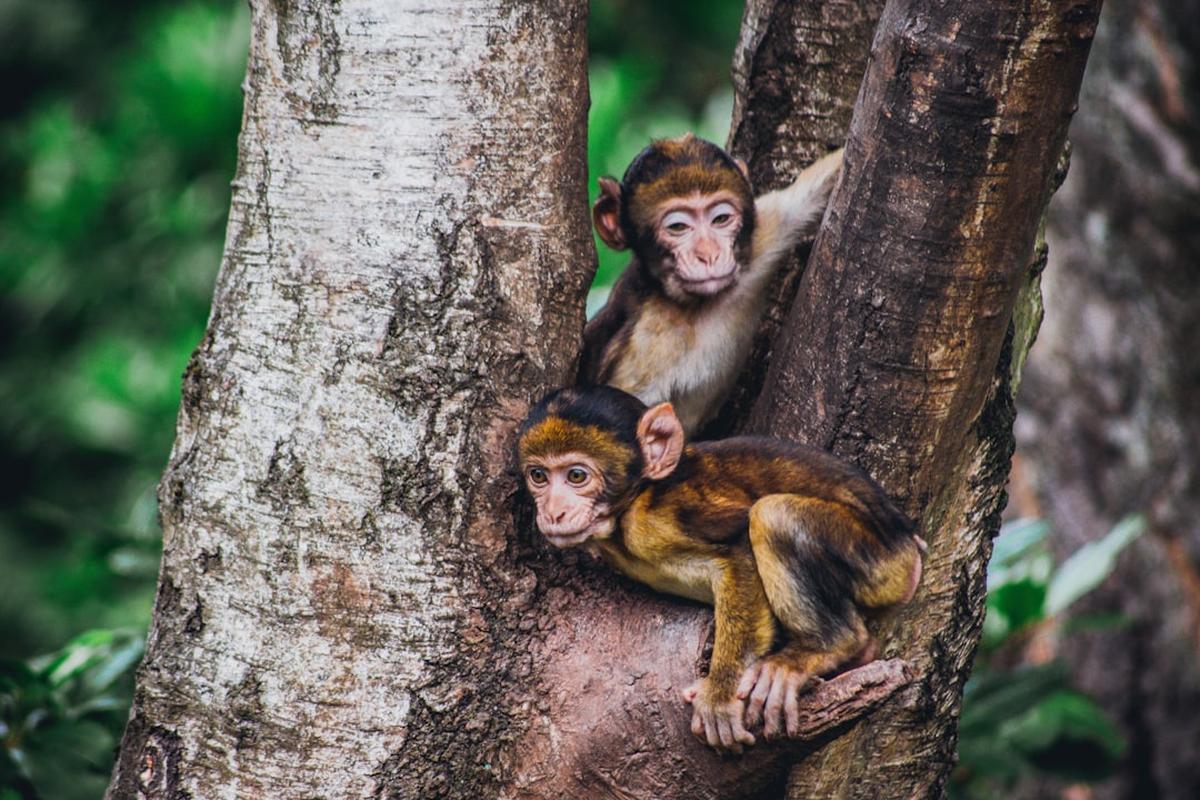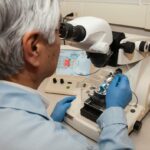Brief Overview of Darwin’s Theory of Evolution
The theory of evolution, as proposed by Charles Darwin, is a cornerstone of modern biology. It posits that all species of organisms arise and develop through the natural selection of small, inherited variations that increase the individual’s ability to compete, survive, and reproduce. This theory, introduced in Darwin’s seminal work, “On the Origin of Species,” has been a subject of continuous scientific investigation and discussion since its publication in 1859.
Importance of Understanding Darwin’s Theory
Understanding Darwin’s theory of evolution is crucial as it provides a comprehensive explanation for the diversity of life on Earth. It also serves as a foundation for advances in various fields such as medicine, psychology, and conservation biology. Moreover, it allows us to comprehend our own place in the natural world and the evolutionary history that has led to our existence.
The Role of Genetics in Supporting Darwin’s Theory
DNA Similarities Across Different Species
Genetics provides compelling evidence for Darwin’s theory. The similarities in DNA sequences across different species suggest a common ancestry. For instance, humans share about 98.7% of their DNA with chimpanzees, indicating a recent common ancestor.
Genetic Mutations and Evolution
Genetic mutations, which are changes in DNA sequences, play a crucial role in evolution. They introduce new genetic variation that can be acted upon by natural selection. Over time, beneficial mutations accumulate, leading to the evolution of new species.
Case Studies: Genetic Evidence of Evolution
One striking example of genetic evidence for evolution is the case of the peppered moth in England. During the Industrial Revolution, soot from factories darkened the trees, and the dark-colored moths, which were previously rare, became common because they were better camouflaged against predators. This change in frequency of dark-colored moths is a clear demonstration of natural selection in action.
Paleontological Evidence for Darwin’s Theory
Fossil Records and Evolution
Fossil records provide a historical account of life on Earth, revealing a pattern of change consistent with evolution. Fossils of simpler organisms are found in older rocks, while fossils of more complex organisms appear in more recent strata, indicating a progression of life forms over time.
Transitional Fossils: Linking Past and Present Species
Transitional fossils, which show intermediate forms between different groups of organisms, are strong evidence for evolution. For example, the fossil of Archaeopteryx, a creature with both bird-like and reptile-like features, provides a link between reptiles and birds.
Case Studies: Paleontological Evidence of Evolution
The evolution of whales from land-dwelling mammals is well-documented in the fossil record. Fossils of early whales, such as Ambulocetus, show a mixture of aquatic and terrestrial adaptations, supporting the idea that whales evolved from land-dwelling ancestors.
Geological Evidence Supporting Darwin’s Theory
Stratigraphy and the Geological Time Scale
Stratigraphy, the study of rock layers, provides a timeline for evolution. The geological time scale, based on stratigraphy, shows a consistent pattern of species appearing, changing over time, and sometimes becoming extinct, consistent with Darwin’s theory.
Radiometric Dating and Evolution
Radiometric dating techniques allow scientists to determine the age of rocks and fossils, providing a timeline for evolutionary events. For example, radiometric dating has shown that the Earth is about 4.5 billion years old, providing ample time for evolution to occur.
Case Studies: Geological Evidence of Evolution
The Burgess Shale, a fossil-rich deposit in Canada, provides a snapshot of life in the Cambrian period, about 500 million years ago. The diversity of organisms found in the Burgess Shale, many of which have no modern counterparts, is consistent with the idea of an “explosion” of life forms during this period, as predicted by evolutionary theory.
Evidence from Comparative Anatomy and Embryology
Homologous Structures and Evolution
Homologous structures, or body parts that are similar in different species because they evolved from a common ancestor, provide evidence for evolution. For example, the forelimbs of humans, cats, whales, and bats have different functions but similar bone structures, indicating a common ancestry.
Vestigial Structures: Traces of Evolutionary History
Vestigial structures, or remnants of organs or structures that had a function in an early ancestor, also support Darwin’s theory. For instance, the human appendix is thought to be a vestigial structure from a time when our ancestors had a diet rich in roughage.
Embryological Similarities Across Species
Embryology, the study of embryos, provides further evidence for evolution. Many species show strikingly similar embryonic stages, suggesting a common ancestry. For example, human embryos have gill slits and tails at certain stages, hinting at our aquatic and reptilian ancestry.
Evidence from Biogeography
Geographic Distribution of Species
The geographic distribution of species, or biogeography, provides further support for evolution. Species on isolated islands often closely resemble species on the nearest mainland, suggesting a common ancestry and subsequent evolution due to different environmental conditions.
Island Biogeography and Evolution
Island biogeography, the study of the distribution of species on islands, provides unique insights into evolution. For example, Darwin’s finches on the Galapagos Islands show a remarkable diversity of beak shapes and sizes, each adapted to a specific type of food, demonstrating adaptive radiation, a form of evolution where one species diversifies into many.
Case Studies: Biogeographical Evidence of Evolution
The marsupials of Australia provide a striking example of biogeographical evidence for evolution. Marsupials are found almost exclusively in Australia, suggesting that they evolved in isolation on this continent. The diversity of marsupials in Australia, from kangaroos to koalas, is a clear demonstration of adaptive radiation.
Evidence from Molecular Biology
Protein and Gene Comparisons Across Species
Molecular biology provides some of the most compelling evidence for evolution. Comparisons of proteins and genes across different species show a remarkable degree of similarity, consistent with a common ancestry. For example, the gene for cytochrome c, a protein involved in cellular respiration, is nearly identical in all living organisms.
Molecular Clocks and Evolution
Molecular clocks, which use the rate of genetic mutations to estimate the time of divergence between species, provide a timeline for evolution. For example, molecular clock studies have shown that humans and chimpanzees diverged from a common ancestor about 5-7 million years ago.
Evolution in Action: Observational Evidence
Microevolution: Small-Scale Evolutionary Changes
Microevolution, or small-scale evolutionary changes within a species, can be observed in real time. For example, the development of antibiotic resistance in bacteria is a clear demonstration of microevolution.
Macroevolution: Large-Scale Evolutionary Changes
Macroevolution, or large-scale evolutionary changes that lead to the formation of new species, is harder to observe directly due to the long timescales involved. However, the cumulative evidence from genetics, paleontology, geology, anatomy, embryology, biogeography, and molecular biology provides strong support for macroevolution.
Case Studies: Observable Evolution in Real Time
One of the most famous examples of observable evolution in real time is the study of finch populations on the Galapagos Islands by Peter and Rosemary Grant. Over several decades, they documented changes in beak size in response to changes in food availability, providing direct evidence for natural selection.
Challenges and Controversies Surrounding Darwin’s Theory
Common Misconceptions About Evolution
Despite the overwhelming evidence, there are still misconceptions about evolution. Some people mistakenly believe that evolution is just a theory, not realizing that in science, a theory is a well-substantiated explanation of some aspect of the natural world, based on a body of facts that have been repeatedly confirmed through observation and experiment.
Addressing the Challenges: Scientific Responses
Scientists continue to address these misconceptions and challenges through education and outreach. They emphasize that evolution is not a belief system, but a scientific theory supported by a vast body of evidence.
Conclusion
Recap of the Evidence Supporting Darwin’s Theory
The evidence supporting Darwin’s theory of evolution is overwhelming and comes from a wide range of scientific disciplines. From the genetic similarities across species to the fossil record, from the geographical distribution of species to the observable changes in populations over time, the evidence consistently points to the conclusion that all life on Earth has evolved from common ancestors.
The Ongoing Relevance of Darwin’s Theory in Modern Science
Darwin’s theory of evolution continues to be a central pillar of modern biology. It provides a unifying framework for understanding the diversity of life on Earth and continues to guide research in fields ranging from medicine to ecology. As our understanding of the natural world deepens, Darwin’s theory remains as relevant today as it was when it was first proposed over 150 years ago.
Frequently Asked Questions
What is Darwin’s theory of evolution?
Darwin’s theory of evolution posits that all species of organisms arise and develop through the natural selection of small, inherited variations that increase the individual’s ability to compete, survive, and reproduce.
How does genetics support Darwin’s theory of evolution?
Genetics provides compelling evidence for Darwin’s theory. The similarities in DNA sequences across different species suggest a common ancestry. Genetic mutations introduce new genetic variation that can be acted upon by natural selection, leading to the evolution of new species.
What is the role of fossils in supporting Darwin’s theory?
Fossils provide a historical account of life on Earth, revealing a pattern of change consistent with evolution. Transitional fossils, which show intermediate forms between different groups of organisms, are strong evidence for evolution.
How does the geographic distribution of species support evolution?
The geographic distribution of species, or biogeography, provides further support for evolution. Species on isolated islands often closely resemble species on the nearest mainland, suggesting a common ancestry and subsequent evolution due to different environmental conditions.
What is the evidence from molecular biology for evolution?
Molecular biology provides some of the most compelling evidence for evolution. Comparisons of proteins and genes across different species show a remarkable degree of similarity, consistent with a common ancestry. Molecular clocks use the rate of genetic mutations to estimate the time of divergence between species.
Can we observe evolution in real time?
Yes, small-scale evolutionary changes, or microevolution, can be observed in real time. For example, the development of antibiotic resistance in bacteria is a clear demonstration of microevolution.
References
- Darwin, C. (1859). On the Origin of Species. John Murray.
- Futuyma, D. J., & Kirkpatrick, M. (2017). Evolution. Sinauer Associates.
- Ridley, M. (2004). Evolution. Blackwell Publishing.
- Strickberger, M. W., & Singh, R. S. (2008). Strickberger’s Evolution. Jones & Bartlett Learning.








